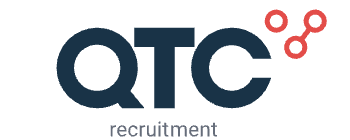Geschreven door raisa - 4 Minuten leestijd
How to use the STAR method to ace your job interview

The STAR method is a way to answer questions during a job interview by describing your abilities in real life situations. Your responses will come across as more meaningful than just describing yourself with descriptive language. The STAR method provides concrete examples of your abilities.
Introduction to the STAR method of interviewing
STAR stands for Situation, Task, Action and Result. First you describe a situation that you were faced with. Then specifically state which tasks were your responsibility, followed by the actions that you took when faced with that task. Finally, describe the results of the action and the resolution of the situation.
The STAR method of interviewing is often used to describe interpersonal abilities such as teamwork, persuasive skills, creativity and perseverance.
When to use the STAR method?
In addition to learning about your educational background and professional experiences, hiring managers often ask behavioural interview questions. Example behavioural interview questions might include:
- How do you manage difficult personalities?
- How do you deal with conflict?
- Have you managed a team?
- How do you manage a project during uncertainty?
- Tell me a time when...
What I personally love about the STAR method is that you can leverage difficulties that you faced in the past during a future job interview. Thus, it makes going through challenging times- whether a conflict or a project that didn’t go the way you intended -worthwhile. These challenges can serve as a learning experience. Therefore, before any job interview, spend some time thinking through how to describe your experiences and actions using the STAR method.
"I’m a student, so what interesting challenges can I share during a job interview?"
Undergraduate and graduate students can use the STAR method to describe challenges they faced during their academic training. However, it would also be acceptable and perhaps even more interesting to describe situations that they faced in different extracurricular activities.
When I first interviewed for positions in the pharmaceutical industry, I used examples from my time in both the Penn Biotech Consulting Group and in the B.A.L.S.A. group. Working with others in a matrix or team environment leads to a lot of interpersonal interaction and rich experiences to draw on in future interviews.
Personal examples of how I used the STAR method
Example #1.
Job interview question: How do you manage difficult personalities?
Example answer:
(Situation) There is a medical director that I have worked with that comes across and is very strong in her opinions and decisions. Other people in my position had challenges getting their projects approved when working with her. Early on, I made the decision to get to know her personally and not only talk about work but also our personal life.
(Task) Then there was a time when I needed something changed in the clinical protocol and needed her to be on board with my request.
(Action) I listened to her concerns and then took her to a work-related happy hour.
(Result) After a glass of wine, she agreed to make the changes I needed. I found that talking in a casual environment and listening to her concerns made her trust me.
I’ll admit that I used wine as a tool to get to my ask. I think my interviewers also appreciated the answer (I did get the position). Getting to know people personally is one way of gaining influence. Stay tuned for future blog posts on influencing without authority.
Example #2.
Job interview question: How do you deal with conflict?
My answer:
(SItuation) I was on a consulting team with very strong personalities. Two people in particular were always clashing. The team needed to make a decision on how best to address the client’s question.
(Task) I was in a role where I had to propose a solution that the team would agree upon despite the current disagreements.
(Action) Therefore, I talked to each person on the team one-on-one to understand what each person thought. I then acknowledged their perspectives and developed a plan. I talked to them individually about the plan before presenting it to the whole team
(Result) The team was able to come to an agreement and we were then able to move forward to provide the client with the data they had requested. I often will meet with individuals prior to a team meeting to get agreement and avoid unnecessary conflict.
Final advice about using the STAR method
The key to the STAR interview method is to prepare ahead of time. Therefore, anticipate the possible interview questions and think of different scenarios that may be applicable and demonstrate your abilities. However, do not force a situation to fit an answer. Listen carefully to the interviewer’s questions and then quickly determine if you can use one of the situations that you prepared.
The answers you provide using the STAR method should not take a long time. Answers should be roughly 2-3 minutes long, and the emphasis should be on the actions you took and the results you achieved. Do not spend a lot of time describing the situation. As always, keep your interview answers professional.
The STAR method is a valuable technique for answering questions during your job interview by describing your strengths in real-life scenarios. Do you want to work in the Life Sciences field but don't know where to start? QTC Recruitment can provide you with tailored advice and assistance in securing a position in the Life Science industry that meets your personal and professional goals. Find out more here.
Also published on Womeninpharmacareers.com
Want to stay informed about current Life Science and recruitment news on a regular base? Then register here for free.
